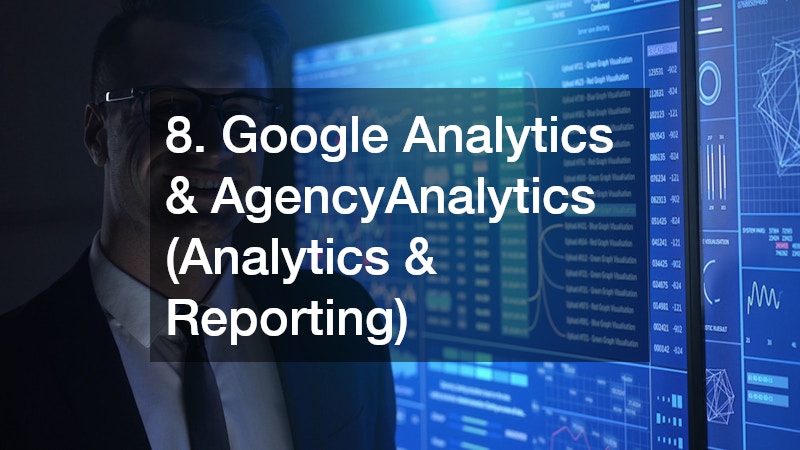In the fast-evolving world of content marketing, staying ahead means leveraging the best tools available. In 2025, professionals are integrating AI, SEO analytics, content planning, design, automation, and distribution tools into their workflows. Entrepreneurs and marketers alike need to understand not just which tools to use, but why they excel and how they can fit into diverse budgets and business sizes.
This guide dives deep into the most powerful content marketing tools that leading experts are using today, covering categories like research & strategy, creation & writing, design & multimedia, distribution & automation, and performance tracking. Each section tackles key questions, making it easier for you to build a strategic content toolkit that scales with your goals.
What Tools Are the Pros Using for Content Research & Strategy?
Before crafting any content, pros start with solid research and strategy. Here are the top tools shaping 2025’s best practices.
1. Semrush & Ahrefs (SEO Powerhouses)
Search engine optimization remains a cornerstone of content success. Tools like Semrush and Ahrefs dominate this space, providing comprehensive keyword insights, competitive analysis, backlink tracking, and content performance data. According to multiple expert roundups, these two platforms consistently rank at the top for content marketers.
Why Use Them?
- Keyword research: Uncover high-volume, low-competition phrases tailored to your niche.
- Content gap analysis: Identify topics your competitors rank for that you haven’t addressed.
- Backlink insights: Monitor who links to your content and who links to your competitors.
- Rank tracking and site audits: Stay on top of SERP positions and technical SEO issues.
Pricing & Audience
- Semrush starts around $139.95/month.
- Ahrefs starts at $99/month .
Ideal for small businesses up through large agencies.
2. BuzzSumo & StoryChief (Content Ideation & Planning)
Great content starts with great ideas. BuzzSumo helps marketers discover trending topics, influencers, and engagement stats. StoryChief, on the other hand, combines ideation with workflow and multi-channel distribution. Both have earned high praise from experts, especially in the realm of content ideation and strategic planning.
What They Do
- BuzzSumo: Spot trending topics, track social shares, and connect with influencers.
- StoryChief: Plan, collaborate, optimize SEO, and publish across multiple channels from one dashboard.
Use‑cases
- BuzzSumo: Great for idea generation and trendspotting.
- StoryChief: Ideal for teams that need collaboration, approvals, and multi-channel distribution.
What Tools Help with Writing & Editing?
Crafting content that is well‑researched and polished is critical. The following tools assist writers and editors at all levels.
3. Jasper, Grammarly & Hemingway App (Write + Polish)

AI‑assisted writing and advanced grammar tools have become standard in 2025. Jasper (formerly Jarvis) is the go‑to AI writer, while Grammarly and Hemingway App ensure clarity, correctness, and readability. These tools consistently appear on expert lists for a reason.
Tool Breakdown
- Jasper: Generates blog drafts, ads, and social copy.
- Grammarly: Catches grammar, spelling, and tone issues.
- Hemingway App: Highlights passive voice and complex sentences.
Why They Matter
- Speed up content creation.
- Maintain high editorial standards.
- Improve readability scores to retain and convert readers.
4. Wordtune & Anyword (Refine & Optimize Copy)
After drafting comes refinement. Wordtune enhances phrasing and tone, while Anyword helps craft data-driven headlines/copy that convert. These tools reflect the growing trend in AI-powered enhancements for engaging writing.
Uses
- Wordtune: Rewrites content in style-specific ways.
- Anyword: Predictive performance scoring for headlines and ads.
Ideal For
Marketers focused on nuanced messaging and optimized copy for higher engagement.
How Are Pros Handling Visuals & Multimedia in 2025?
Content isn’t just text. Here’s how modern marketers enhance visual appeal:
5. Canva, Adobe Express & Lumen5 (Design & Video)
Visual content is quicker to consume and more shareable. In 2025, marketers rely heavily on Canva, Adobe Express, and emerging tools like Lumen5 to create imagery and short-form video, even with limited budgets.
Tool Features
- Canva: Intuitive drag-and-drop for graphics, presentations, and social posts.
- Adobe Express: AI-enhanced designs, social scheduling, and video features .
- Lumen5: Converts blog posts into short videos using AI .
Benefits
- Enhance engagement across social and email.
- Support brand consistency.
- Produce visuals quickly without design teams.
Which Tools Handle Distribution & Automation?
Efficiently managing distribution and automation can save time and boost reach.
6. HubSpot, ActiveCampaign & Buffer (Automation & Social)
Once content is created, it needs to be distributed and tracked. Tools like HubSpot, ActiveCampaign, and Buffer streamline posting, segmentation, personalization, and automation to ensure content reaches the right audience at the right time.
Highlights
- HubSpot: All‑in‑one CRM, content hub, automation, analytics .
- ActiveCampaign: Email automation & lead nurturing.
- Buffer: Social scheduling across major platforms.
Perfect For
Businesses scaling outreach through email funnels or consistent social engagement.
7. Fireflies.ai & BuzzStream (Content‑Driven Outreach)
Expert marketers often rely on interviews or influencer outreach to enrich content. Fireflies.ai transcribes interviews, while BuzzStream supports link-building and digital PR. According to industry lists, both are considered indispensable.
How They Work
- Fireflies.ai: Records & transcribes interviews for quotes and source material.
- BuzzStream: Manages outreach campaigns, relationship tracking for guest posts or link requests.
Use Cases
Ideal for content involving expert insights, PR-driven exposure, or domain authority building.
How Can You Track Performance & ROI?
Measuring performance validates your efforts. These tools offer top-tier analytics.
8. Google Analytics & AgencyAnalytics (Analytics & Reporting)

Tracking traffic, conversions, and engagement—this is where Google Analytics and AgencyAnalytics shine. They empower marketers with data to optimize content strategy continually .
Tools
- Google Analytics: A free platform that tracks user activity, flows, and goals.
- AgencyAnalytics: Branded client reports with 80+ marketing integrations.
Benefits
- Evaluate content performance.
- Generate professional reports for stakeholders/clients.
9. MarketMuse & TopicRanker (Content Optimization)
Optimizing existing content for improved SEO and engagement is a priority. MarketMuse builds comprehensive topic models, while TopicRanker identifies keyword gaps—both emerging strongly in 2025.
Functionality
- MarketMuse: AI-driven content topic planning and optimization.
- TopicRanker: Identifies thin content, suggests keywords and meta improvements.
Why Pros Use Them
To boost organic rankings and fill in content strategy gaps.
What AI-First Tools Should You Know About?
AI isn’t a trend—it’s part of every modern stack. These tools shine in 2025.
10. Omneky & Adobe LLM Optimizer (AI for Ads & Branding)
AI isn’t just for writing—it’s for creative production and audience optimization. Omneky specializes in AI-generated ads across channels, while Adobe LLM Optimizer helps brands manage AI-driven visibility and user engagement.
Product Highlights
- Omneky: Automates creative testing, omni-channel deployment.
- Adobe LLM Optimizer: Ensures brand visibility across AI platforms.
Best Uses
Brands are scaling paid campaigns with minimal manual oversight.
How Do You Choose the Right Mix of Tools?
Building a tool stack can feel overwhelming. Here’s a framework to guide your selections:
- Define your content goals
- Awareness? SEO? Lead generation? Engagement?
- Choose tools that help reach those goals—e.g., choose Semrush/Ahrefs for SEO focus, HubSpot for lead flows.
- Match tools to team skills
- Solo creators: opt for all-in-one tools like Canva, Jasper, and HubSpot.
- Small teams: add feedback/outreach tools like StoryChief, BuzzStream.
- Agencies: implement reporting tools like AgencyAnalytics and MarketMuse.
- Control costs
- Begin with free tiers (Canva, GA, BuzzSumo free version).
- Scale up monthly paid tools as ROI becomes clear.
- Check integrations
- Ensure core tools sync: e.g., Semrush + GA + HubSpot + Canva + Buffer.
- Test before committing
- Most tools offer free trials—leverage them to ensure they fit your workflow before investing.
Smart teams focus less on which tools are popular and more on how the tools support strategic KPIs like traffic, conversion, and ROI.
Summary Table: Top Tools at a Glance
| Category | Top Tools | What They Do |
| SEO & Strategy | Semrush, Ahrefs, BuzzSumo | Keyword research, content gaps, trend alerts |
| Writing & Editing | Jasper, Grammarly, Hemingway, Wordtune, Anyword | Drafting, grammar, readability, performance optimization |
| Design & Video | Canva, Adobe Express, Lumen5 | Visuals, video creation, branding |
| Distribution & Automation | HubSpot, ActiveCampaign, Buffer, StoryChief | Email/social automation, campaigns |
| Outreach & Interactions | Fireflies.ai, BuzzStream | Interviews, transcriptions, and link building |
| Analytics & Optimization | Google Analytics, AgencyAnalytics, MarketMuse, TopicRanker | Content performance, SEO audits, optimization |
| AI Creative Tools | Omneky, Adobe LLM Optimizer | AI-driven ads and brand visibility across AI platforms |
FAQs: Quick Answers to Common Questions
How often should you update your toolkit?
Evaluate every 6–12 months. With AI and platforms evolving, it’s smart to review if tools still deliver ROI or if alternatives have emerged.
Are free versions enough?
For smaller operations, yes. But growing teams will need premium tiers (e.g., Jasper, HubSpot) to unlock full features and integrations.
Will AI replace human input?
No—experts stress AI is a boost, not a replacement. You still need strategy, creativity, nuance, fact-checking, and editorial oversight to keep content high-quality.
Final Thoughts for Entrepreneurs & Marketers
In 2025, content marketing isn’t about picking one magic tool—it’s about building a cohesive stack that aligns with your strategy, budget, and team dynamics. This guide gives you a full overview:
- Start with SEO and research tools (Semrush, Ahrefs, BuzzSumo).
- Enhance writing with AI and editing tools.
- Elevate visuals using Canva, Adobe Express, and Lumen5.
- Automate distribution via HubSpot, Buffer, and StoryChief.
- Nurture relationships through Fireflies.ai and BuzzStream.
- Measure impact using analytics tools like Google Analytics.
- Stay ahead with AI-driven ad tools like Omneky and Adobe LLM Optimizer.
Blend these tools thoughtfully, test continually, and pivot based on results, and you’ll mirror what the pros are doing in 2025.



